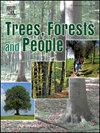Local Livelihoods and Determinants of Peatland Protection in Indonesia
IF 2.7
Q1 FORESTRY
引用次数: 0
Abstract
Peatlands are vital ecosystems for environmental regulation but also support the livelihoods of local people. However, anthropogenic activities are leading to peatland degradation and reduction of ecosystem services. Understanding this complex relationship between people and peatlands is key for effective management. This study investigated how socio-economic conditions influenced local knowledge and practices of peatland protection in the Sungai Kiyap-Sungai Kampar Kiri Peatland Hydrological Unit, Riau Province, Indonesia. Twelve socio-economic factors including demographics, livelihood strategies, and resource accessibility were obtained from local people using a semi-structured questionnaire during May – June 2023. Household knowledge and practices, including valuation of peatland importance, threats, and community participation in protection schemes were measured. Findings showed moderate to high levels of knowledge of peatland characteristics and importance, but a distinct gap between knowledge and practice, especially on sustainable agriculture. Age, education, and training/workshop attendance determined knowledge levels, whereas length of residence and household income influenced peatland protection. Key recommendations to bridge the knowledge-practice gap included dissemination of best management practices, diversifying local-initiative livelihood options, scaling up successful sustainable agriculture, and providing financial incentives. Finally, mutual collaboration and long-term commitment among community groups were essential for information exchange and developing innovative approaches to sustain connectivity between peatlands and people.
印度尼西亚泥炭地保护的当地生计和决定因素
泥炭地是环境监管的重要生态系统,但也支持当地人民的生计。然而,人为活动正在导致泥炭地退化和生态系统服务功能的减少。了解人与泥炭地之间的这种复杂关系是有效管理的关键。本研究调查了社会经济条件如何影响印度尼西亚廖内省Sungai Kiyap-Sungai Kampar Kiri泥炭地水文单位的当地泥炭地保护知识和实践。在2023年5月至6月期间,使用半结构化问卷从当地人那里获得了包括人口统计、生计策略和资源可及性在内的12个社会经济因素。测量了家庭知识和实践,包括泥炭地重要性、威胁和社区参与保护计划的评估。调查结果显示,对泥炭地特征和重要性的了解程度中等至较高,但知识与实践之间存在明显差距,特别是在可持续农业方面。年龄、受教育程度和参加培训/讲习班的情况决定了知识水平,而居住时间长短和家庭收入影响泥炭地的保护。弥合知识与实践差距的主要建议包括传播最佳管理实践、使地方自主的生计选择多样化、推广成功的可持续农业以及提供财政激励。最后,社区团体之间的相互合作和长期承诺对于信息交流和制定创新方法以维持泥炭地与人民之间的联系至关重要。
本文章由计算机程序翻译,如有差异,请以英文原文为准。
求助全文
约1分钟内获得全文
求助全文
来源期刊

Trees, Forests and People
Economics, Econometrics and Finance-Economics, Econometrics and Finance (miscellaneous)
CiteScore
4.30
自引率
7.40%
发文量
172
审稿时长
56 days
 求助内容:
求助内容: 应助结果提醒方式:
应助结果提醒方式:


